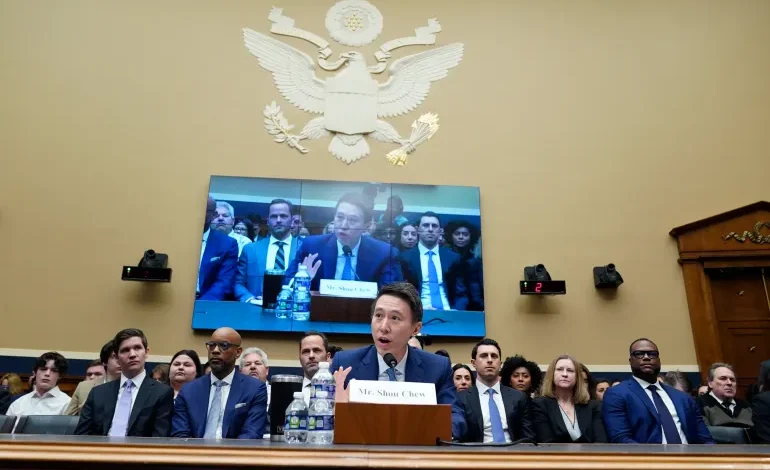US says China can spy with TikTok. It spies on world with Google

During a five-hour grilling of the chief executive of TikTok last week, United States lawmakers railed against the possibility of China using the wildly popular, partly Chinese-owned app to spy on Americans.
They did not mention how the US government itself uses US tech companies that effectively control the global internet to spy on everyone else.As the US considers banning the short video app used by more than 150 million Americans, lawmakers are also weighing the renewal of powers that force firms like Google, Meta and Apple to facilitate untrammelled spying on non-US citizens located overseas.
Section 702 of the Foreign Intelligence Surveillance Act (FISA), which the US Congress must vote to reauthorise by December to prevent it from lapsing under a sunset clause, allows US intelligence agencies to carry out warrantless spying on foreigners’ email, phone and other online communications.
While US citizens have some protections against warrantless searches under the Fourth Amendment of the US Constitution, the US government has maintained that these rights do not extend to foreigners overseas, giving agencies such as the National Security Agency (NSA), Federal Bureau of Investigation (FBI) and Central Intelligence Agency (CIA) practically free rein to snoop on their communications.
Information may also be turned over to US allies like the United Kingdom and Australia.Though it is common for governments to spy abroad, Washington enjoys an advantage not shared by other countries: jurisdiction over the handful of companies that effectively run the modern internet, including Google, Meta, Amazon and Microsoft.
For billions of internet users outside the US, the lack of privacy mirrors the alleged threat that US officials say TikTok, owned by Chinese company ByteDance, poses to Americans.“So the noise the Americans are making about TikTok must be seen less as a sincere desire to protect citizens from surveillance and influence operations, and more as an attempt to ring-fence and consolidate national control over social media,” Wolf added.US President Joe Biden’s administration is pushing for both the power to ban TikTok and the renewal of Section 702, which it has described as an “invaluable tool that continues to protect Americans every day”.
Despite Tiktok’s efforts to assuage national security and privacy fears, including working with US tech giant Oracle to store American data on US soil in a $1.5bn initiative known as “Project Texas”, a ban or forced sale of ByteDance’s stake appears increasingly likely amid growing bipartisan antipathy toward the app in Congress.
In an appearance before Congress on Thursday, TikTok CEO Shou Zi Chew failed to satisfy both Republicans and Democrats with his answers to a barrage of questions about data privacy and national security concerns stemming from a Chinese law that requires local companies to “support, assist and cooperate with the state intelligence work”.
Over the weekend, US House of Representatives Speaker Kevin McCarthy, a Republican, said his colleagues “will begin moving forward with legislation to protect Americans from the technological tentacles of the Chinese Communist Party.”
The app has already been banned on US government devices, as well as official devices in countries including Canada, Belgium, Denmark, and New Zealand, although an outright ban is seen as more legally fraught due to possible conflict with the First Amendment of the constitution that safeguards free speech.Amid the growing chorus of voices casting TikTok as a threat, the privacy rights of non-Americans have received little mention.
In a recent article about the reauthorisation of Section 702, The New York Times described non-US citizens’ privacy as having “played little meaningful role” in the debate.
In 2021, the most recent year for which data is available, the US targeted 232,432 “non-US persons” for surveillance, according to government data.
The American Civil Liberties Union (ACLU) estimates that the US government has collected more than one billion communications per year since 2011, based on how the number of targets has grown since that year.










